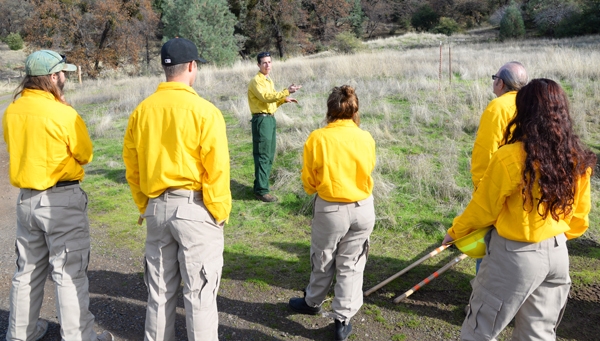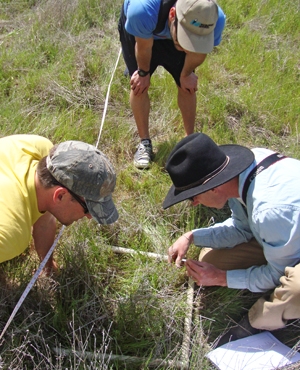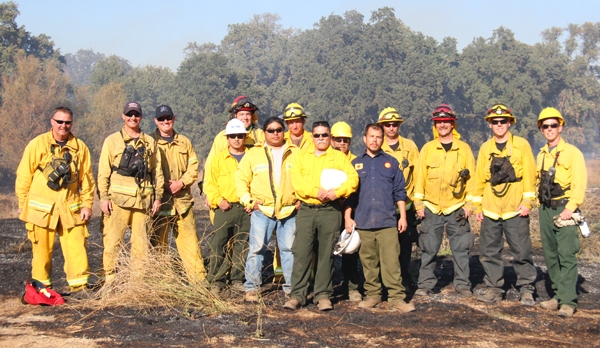Reposted from the Confluence - Blog of the California Institute for Water Resources
Don Hankins is a professor of geography and planning at Chico State and a Miwko? (Plains Miwok) traditional cultural practitioner. He has spent his academic career working on water and fire issues in California, with a focus on applied traditional Indigenous stewardship.
You've done work on the use of Indigenous traditional knowledge related to fire and water. A major result of your research and practice has been to reveal a disconnect between current environmental management and Indigenous approaches to working with the environment. Can you say more about what you have found?
Tribal knowledge and experience are often marginalized or devalued in environmental management, and relationships between managers and Tribes are often non-reciprocal. For example, when it comes to fire, there can be a sense that Indigenous knowledge is a relic of the past. This is not the case – Indigenous fire practice is alive and well. It brought us through the major climate events of the past and is absolutely relevant to the challenges we face today.
Integrating Indigenous knowledge and people into ongoing management efforts can preserve traditional ways and invigorate agency approaches, but my own research has shown it can also subjugate Indigenous perspectives. For example, there is a great deal of resistance regarding how traditional cultural burning can be carried out in partnership with agency-based programs. Rather than recognize the knowledge and preparation that traditional cultural practitioners have, agencies see their standards-based approach as the only path to putting fire on the ground. This in turn risks traditional knowledge of fire and related cultural practices. Burning is a traditional sovereign right, but in many places, including the U.S. and Australia, legal systems work to regulate fire out of the land.
These kinds of challenges also exist with water. For example, my ancestral homelands of the Delta are now used as a major water conveyance, compromising ecosystems and Indigenous cultural properties. Despite our deep understanding of the area, Indigenous perspectives are really not considered in its management.
I also think about what nature has provided in terms of water storage within the landscape and the fact that we still see interest in building dams rather than restoring natural basins and sinks. Luckily, some headway is being made in recognizing that natural landscape features contribute a great deal to recharge and storage.
What about your work on fire and water in California do you find most challenging?
I wish I had more time to devote to research, publications, and outreach. A lot of my current work is unfunded or has limited support, despite the applicability to current issues. Some projects have started out of me seeing a research need, starting a pilot project, and getting students or community members engaged to help out in the field. I really strive to be in the field because that's where I can do what I'm most interested in: applying Indigenous approaches to management and using scientific methods to assess the results. This work provides me opportunities to advance science, but also to keep a cultural lens on the landscape to assess the condition of, and changes to, traditional resources and interspecies relationships in the places I work.

Every day I see news about new research or political initiatives, and I feel overwhelmed. Getting word out, particularly to decision makers, is challenging, likely because they are overwhelmed too. We have a lot of misinformation on major decisions. I'm thinking of the Governor declaring a drought, or referencing year round fire as the “new normal.” If we teach people to read the land, they will know it is a drought, and when good fire can be used, instead of being vulnerable to what nature will provide otherwise. If we are to succeed in living in this land, we must consider what it is telling us and not force unrealistic solutions on it.
What do you see as some ways forward to better align Indigenous perspectives and current management efforts?

It's a potentially exciting time to improve policy and management decisions for the betterment of conditions for future generations. I see a combined approach using traditional knowledge and science as being the solution to sustainable living and a resilient future. Really, that has been proven by the existence of the landscape that non-Indigenous people found when they arrived in California. We just need to facilitate a change in this society to see the benefits.
